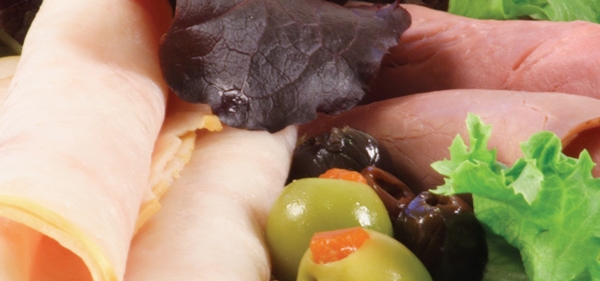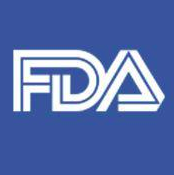As the world has grown smaller, scientific organizations and governments worldwide have accelerated their efforts to achieve consensus on food regulations to ensure the global availability of safe and wholesome foods for consumers. While some progress has been made in recent years, many global harmonization challenges remain. Controlling public health threats from Listeria monocytogenes stands front and center among these challenges.
The measurement of the presence and concentration of L. monocytogenes plays a significant role in the perceived control of this specific microorganism in ready-to-eat (RTE) foods. L. monocytogenes is a bacterium that can contaminate foods and cause a mild, non-invasive illness (called listerial gastroenteritis) or a severe, sometimes life-threatening illness (called invasive listeriosis). Invasive listeriosis is characterized by a high case-fatality rate, ranging from 20% to 30%.[1] The main target populations for listeriosis are the following:[2]
• Pregnant women/fetus – perinatal and neonatal infections
• Immunocompromised persons and the elderly
• Cancer patients – leukemic patients particularly
• Diabetic, cirrhotic, asthmatic and ulcerative colitis patients – less frequently reported
The manifestations of listeriosis include septicemia, meningitis, encephalitis and intrauterine or cervical infections in pregnant women, which may result in spontaneous abortion or stillbirth. The onset of the aforementioned disorders is usually preceded by influenza-like symptoms including persistent fever.[1] Gastrointestinal symptoms such as nausea, vomiting and diarrhea may precede more serious forms of listeriosis or may be the only expressed symptoms. The onset time to serious forms of listeriosis is unknown but may range from a few days to three weeks. The onset time to gastrointestinal symptoms is unknown but is probably greater than 12 hours. The infective dose of L. monocytogenes is unknown but is believed to vary with the bacterial strain and the susceptibility of the victim.
Widespread in the environment, L. monocytogenes is found in soil, water, sewage and decaying vegetation. It can be readily isolated from humans, domestic animals, raw agricultural commodities and food processing environments, particularly cool, damp areas. L. monocytogenes can grow slowly at refrigeration temperatures, requiring the appropriate management of refrigerated RTE foods that can support its growth.
Most cases of human listeriosis occur sporadically; however, much of what is known about the epidemiology of the disease has been derived from outbreak-associated cases. With rare exceptions, foods that have been reported to be associated with outbreaks or sporadic cases of listeriosis have been those that can support the growth of L. monocytogenes and are ready-to-eat (including coleslaw, frankfurters, deli meats, butter and fresh, soft cheese made from unpasteurized milk); in addition, they are often associated with a failure of food safety systems during production or processing.[1] Data from a variety of sources of information show that L. monocytogenes has been detected to varying degrees in unpasteurized and pasteurized milk; high-fat dairy products; soft, unripened cheese (cottage cheese, cream cheese); cooked, RTE crustaceans; smoked seafood; fresh, soft cheese (queso fresco); semi-soft cheese (blue, brick, monterrey); soft-ripened cheese (brie, camembert); deli-type salads; sandwiches; fresh-cut fruits and vegetables; and raw molluscan shellfish.[1] For many RTE foods, contamination of foods with L. monocytogenes can be avoided through the application of current Good Manufacturing Practices that establish controls on ingredients, listericidal and listeristatic processes, segregation of foods that have been cooked from those that have not, and sanitation controls with effective environmental monitoring programs.[1]
Comparing Global Numbers
The rate of listeriosis is about the same among developed countries, independent of the policies that those countries have in place. In the United States, there are an estimated 3.4–4.4 cases/million people, with a 20–30% mortality rate; the rate is 3 cases/million in Australia, with a 23% mortality rate; in New Zealand, a rate of 5 cases/million with a 17% mortality rate; and in the EU a rate of 0.3–7.5 cases/million is estimated.[3] In 2000, the U.S. Department of Agriculture’s (USDA) Economic Research Service estimated a cost of $2.3 billion/year for 2,298 cases.[4]
Three risk assessments have been completed for L. monocytogenes in RTE foods, all of which are excellent sources of information for determining scientifically based microbiological criteria (MC) for this microorganism. In 2003, the U.S. Food and Drug Administration (FDA) published the “Quantitative Assessment of the Relative Risk to Public Health from Foodborne Listeria monocytogenes Among Selected Categories of Ready-to-Eat Foods”[5] and USDA’s Food Safety and Inspection Service (FSIS) released “Risk Assessment for Listeria monocytogenes in Deli Meat.”[6] The following year, the United Nations’ Food and Agriculture Organization (FAO) and the World Health Organization (WHO) published an analysis titled “Risk Assessment of Listeria monocytogenes in Ready-to-Eat Foods.”[7]
Some of the conclusions from the FSIS risk assessment for deli meats included: increased frequency of food-contact surface testing and sanitation is estimated to lead to a proportionally lower risk of listeriosis; and combinations of interventions (i.e., microbiological testing and sanitation of food-contact surfaces, pre- and post-packaging treatments and the use of growth inhibitors/product reformulation) appear to be more effective than any single intervention step. Based on some of the information and scenarios from this risk assessment, FSIS, under an interim final rule released on June 6, 2003, afforded RTE products different regulatory treatment. The products had to be produced under one of three alternative control programs to reduce or eliminate L. monocytogenes, or suppress or limit its growth. Those programs recognize the variety of means that may be used:
• Post-lethality treatment that reduces or eliminates L. monocytogenes and an antimicrobial agent or process that suppresses or limits its growth throughout shelf life (Alternative 1);
• Post-lethality treatment that reduces or eliminates L. monocytogenes OR an antimicrobial agent or process that suppresses or limits its growth throughout shelf life (Alternative 2);
• Sanitation procedures only to prevent L. monocytogenes contamination (Alternative 3)
Under alternative 1 or Alternative 2 by post-lethality treatment, FSIS would apply relatively less sampling to a product undergoing a post-lethality treatment, providing a greater than 2-log10 reduction of L. monocytogenes, relatively more sampling to a product receiving a post-lethality treatment giving between a 1- and 2-log10 reduction, and would consider anything less than a 1-log10 reduction ineligible for these two Alternatives unless there is supporting documentation that the treatment provides an adequate safety margin.[8]
FDA’s 2003 risk assessment estimated that those foods posing the highest risk of being associated with listeriosis are those that support the growth of L. monocytogenes. In contrast, the foods that the risk assessment estimated to pose the lowest risk of being associated with listeriosis are foods that have intrinsic or extrinsic factors to prevent the growth of L. monocytogenes, or are processed to alter the normal characteristics of the food.[1] For example, it is well established that L. monocytogenes does not grow when: (i) the pH of the food is less than or equal to 4.4; (ii) the water activity of the food is less than or equal to 0.92; or (iii) the food is frozen.
International Discord
Currently there is no international agreement on what numbers of L. monocytogenes in foods are acceptable to protect the consumer. In several countries, different criteria or recommendations for tolerable levels of L. monocytogenes in RTE foods have been established, but the rationale is not always clear.3 In the U.S., a major outbreak of listeriosis occurred in 1985, when a Mexican-style soft cheese caused over 142 cases of illness with 48 fatalities. In the same year, an FDA survey found L. monocytogenes in both imported and domestic fresh cheeses. It was recognized that L. monocytogenes had caused foodborne disease from food products regulated by FDA and USDA, or had the potential to do so.3 Thus, FDA established the policy of “zero tolerance” for L. monocytogenes in RTE foods, the microbiological criteria being “absent in 25 g” (< 0.04 cfu/g).
Recently, 15 U.S. trade associations submitted a petition to FDA to amend the regulatory limit to 100 cfu/g L. monocytogenes in foods that do not support the growth of this microorganism. The limit would establish a science-based standard for the presence of L. monocytogenes in such foods based on new and emerging evidence that consumer protection is a function of the microorganism’s level in food—not its mere presence; that low levels of L. monocytogenes are not uncommon in the food supply; and that such low levels are regularly consumed by many people without apparent harm.
In response, FDA issued two draft documents: “Draft Guidance for Industry: Control of L. monocytogenes in Refrigerated or Frozen RTE Foods” and “Draft Compliance Policy Guideline.” The guidance document divides foods into two categories: foods that support the growth of L. monocytogenes are to be placed in the high-risk category, and the MC would remain at absence in 25 g (0.04 cfu/g); and foods that do not support the growth of L. monocytogenes are to be placed in the low-risk category, and the microbiological criteria for these foods would be less than 100 cfu/g. If the food contains L. monocytogenes at levels higher than those mentioned above, per category, the food would be considered adulterated. The MC in these draft guidelines are in close alignment with those of the EU and Canada.
The enforcement policy in the draft guidance clarifies which foods support the growth of L. monocytogenes, which will help ensure that FDA resources are focused on these high-risk foods. The agency anticipates that it may be able to increase the number of samples it periodically collects and tests for L. monocytogenes to verify compliance with the limit for this microorganism in low-risk RTE foods while it continues to focus its inspection and outreach efforts on facilities manufacturing high-risk RTE foods. There was a 60-day comment period, and at the time this article was written (October 2009), no further updates were available.
Microbiological criteria for foods in international trade are addressed in the joint FAO/WHO food standards program, as implemented by the Codex Alimentarius Commission (CAC).[9] Established in 1962, this program was the direct result of conflict between national food legislation and the general requirements of the main food markets of the world.[10]
At that time, the Commission’s objectives were to develop international food standards, Codes of Practice and guidelines, anticipating that their general adoption would help remove and prevent non-tariff barriers to the food trade. The Codex Committee on Food Hygiene (CCFH) has the major responsibility for all provisions on food hygiene practice (effectively, good hygiene practices). The CCFH requires expert advice in dealing with highly specialized microbiological matters and especially when developing microbiological criteria. Such advice frequently has been provided by the International Commission for the Microbiological Specifications for Foods through its publications and several discussion papers.[9,11]
In 2007, CAC adopted the “Guidelines on the Application of General Principles of Food Hygiene to the Control of Listeria monocytogenes in Ready-To-Eat Foods – CAC/GL 61-2007”[12] including Annex I. In 2009, the CAC adopted two more Annexes to the Listeria Guidelines: Annex I, “Recommendations for an Environmental Monitoring Program for Listeria monocytogenes in Processing Areas,” is addressed to manufacturers of ready-to-eat foods; Annex II, “Microbiological Criteria for Listeria monocytogenes in Ready-to-Eat Foods,” provides criteria intended as advice to governments within a framework for control of L. monocytogenes in RTE foods; and Annex III, “Recommendations for the Use of Microbiological Testing for Environmental Monitoring and Process Control Verification by Competent Authorities as a Means of Verifying the Effectiveness of HACCP and Prerequisite Programs for Control of Listeria monocytogenes in Ready-to-Eat Foods,” is for use by competent authorities if they intend to include environmental monitoring or process control testing among their regulatory activities.
Different types of food present different risks from L. monocytogenes, hence different microbiological criteria could apply for the following categories of foods: (a) RTE foods in which growth of L. monocytogenes will not occur and (b) RTE foods in which L. monocytogenes growth can occur.
Section 4 of the Annex describes microbiological criteria for the two different categories of RTE foods and an alternative approach to establish and implement other validated limits for the L. monocytogenes concentration at the point of consumption or at other points that provide an acceptable level of consumer protection for ready-to-eat foods. Both microbiological criteria for L. monocytogenes follow a two-class sampling plan. Point of application is “from the end of manufacture or port of entry (for imported products) to the point of sale.” In both cases, five samples must conform to the criterion and no defective sample units are allowed.
RTE foods in which growth of L. monocytogenes will not occur would be determined based on scientific justification, including the inherent variability of factors controlling L. monocytogenes in the product. For RTE foods in which L. monocytogenes growth will not occur under conditions of storage and use that have been established for the product, the microbiological limit that separates acceptable lots from unacceptable lots is “100 cfu/g.”
An RTE food in which there is greater than an average of 0.5 log cfu/g increase in L. monocytogenes levels for at least the expected shelf life under reasonably foreseeable conditions of distribution, storage and use, is considered a food in which growth of L. monocytogenes can occur. For RTE foods in which growth of L. monocytogenes can occur, the microbiological limit is “absence in 25 g” (expressed as < 0.04 cfu/g). Typical actions to be taken where there is a failure to meet the criteria would be to prevent the affected lot from being released for human consumption, recall the product if it has been released for human consumption, and/or determine and correct the root cause of the failure.
Reaching a Global Consensus
Harmonization of food regulations can only be achieved through agreement between governments. As such, the CAC may be the most logical international body for achieving this objective. Through the sustained efforts of scientists and regulators, science-based regulations to control the growth of L. monocytogenes in RTE foods worldwide may be achieved in the not too distant future.
Read sidebar: GHI Promotes Consensus on Food Regulations, Legislation
Cynthia Stewart, Ph.D., is General Manager of the Silliker Food Science Center, a leading U.S. contract research organization.
John Williams Jr. is a Silliker, Inc. senior communications specialist. The authors can be reached at info@silliker.com.
References
1. www.fda.gov/Food/GuidanceComplianceRegulatoryInformation/GuidanceDocuments/FoodProcessingHACCP/ ucm073110.htm.
2. www.fda.gov/Food/FoodSafety/Foodborne Illness/FoodborneIllnessFoodbornePathogensNaturalToxins/BadBugBook/ucm070064.htm.
3. www.fsis.usda.gov/PDF/Slides_092806_ ETodd3.pdf.
4. www.mindfully.org/Food/Foodborne-Illness-Costs-USDA.htm.
5. www.fda.gov/ohrms/dockets/dailys/03/ oct03/103003/99n-1168-ra00001-001-Summary-vol23.doc.
6. www.fsis.usda.gov/PDF/Lm_Deli_Risk_Assess_Final_2003.pdf.
7. www.fao.org/docrep/010/y5394e/y5394e00.htm.
8. www.fsis.usda.gov/oppde/rdad/FRPubs/97-013F/LM_Rule_Compliance_Guidelines_May_2006.pdf.
9. Codex Alimentarius Commission. 1997. Recommended International Code of Practice for the General Principles of Food Hygiene. CAC/RCP 1-1969, Rev. 3 – 1997.
10. International Commission on the Microbiological Specifications for Foods. 2002. Microorganisms in Foods 7: Microbiological Testing in Food Safety Management. Kluwer Academic/Plenum Publishers, New York.
11. International Commission on Microbiological Specifications for Foods. 1998. Microbial Ecology of Food Commodities. In Microorganisms in Foods. London, Blackie Academic and Professional.
12. Codex Alimentarius Commission. 2007. Guidelines on the Application of General Principles of Food Hygiene to the Control of Listeria monocytogenes in Ready-To-Eat Foods - CAC/GL 61-2007.
Sidebar
GHI Promotes Consensus on Food Regulations, Legislation
Founded in 2004 as a joint activity of the U.S.-based Institute of Food Technologists International Division and the European Federation of Food Science and Technology, the Global Harmonization Initiative (GHI) is a network of scientific organizations and individual scientists working together to promote harmonization of global food safety regulations and legislation. GHI’s objective is to achieve consensus on the science of food regulations and legislation to ensure the global availability of safe and wholesome food products for all consumers. GHI facilitates global discussion about the scientific issues that support decisions made by national governments and international regulatory bodies by:
• Providing the foundation for sound, sensible, science-based regulations
• Creating a forum for scientists and technologists to interact with regulatory authorities on a global basis
• Providing industry, regulators and consumers an independent, authoritative information resource
—This sidebar is based on a book chapter in the GHI’s first book, “Ensuring Global Food Safety: Exploring Global Harmonization.”




